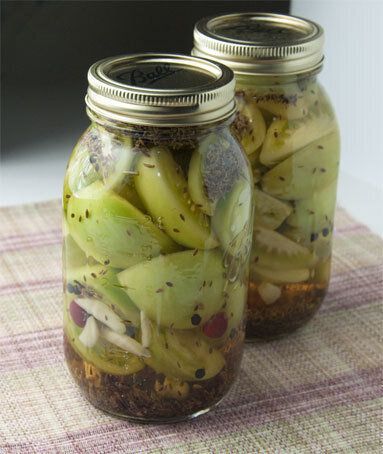
For Alex Hozven, food is either living or dead. At her Cultured Pickle Shop in Berkeley, California, she tends 20,000 pounds of vegetables that "breathe" carbon dioxide. She's simply pickling vegetables, but to most of us used to "dead food," it's a foreign concept.
"People don't really tend to think about their food as being alive. In sort of a modern industrial food sense when you say food is alive that tends to freak people out. But you know eating really denatured dead food obviously causes a whole host of problems."
For millennia, fermented foods were part of every culture's diet -- e.g., sauerkraut, kimchi, pickled herring, giardiniera, miso, kombucha, kefir -- but today, with our modern industrial food system, even our "pickles" aren't usually pickled. Instead, they are simply cucumbers soaked in vinegar and heat-treated to kill any pathogens.
Instead of using the modern shortcut (vinegar and pasteurization) Hozven pickles her vegetables (cabbages, carrots, radish, beets, etc.) relying on the slower method of fermentation that adds flavor, nutrition and makes them easier to digest.
Some come to the Cultured Pickle Shop looking for a miracle cure -- after all, fermented foods are credited with being everything from antioxidants to anti-inflammatories -- and while Hozven warns against treating these foods as medicine, she admits there's no doubt they're good for your gut.
"Your whole digestive system in an ideal world is an ecosystem, and so you need to have this whole sort of colony community system of beneficial bacteria that is both going to help digest your food and assimilate the nutrients from them, but also sort of make sure that any pathogenic bacteria which are going to enter your system, which is inevitable, are kept in sort of check, in balance."
Perhaps the most fun part of fermentation is cultured soft drinks. The earliest sodas used fermented vegetables for the fizz. Even as recently as a century or two, it wasn't so uncommon to drink a "root beer" or a "ginger ale" truly cultured from roots.
Today, with the push for a healthier alternative to our modern sodas, even Red Bull has a fermented option with a drink that uses a kombucha culture. Those at Red Bull say "Kombucha's secret lie in the Chin dynasty, 221 b.c."
Hozven also makes a kombucha. She describes the culture (a colony of bacteria and yeast) as a jellyfish-type blob that eats tea and sugar.
"No one knows totally where it came from. Some people think it originated in China. It could have been just like the scum that formed on someone's teapot at some point and it made it sort of sour and bubbly and 'hey, don't we all love sour and bubbly beverages.'"
Other fermented food videos from faircompanies